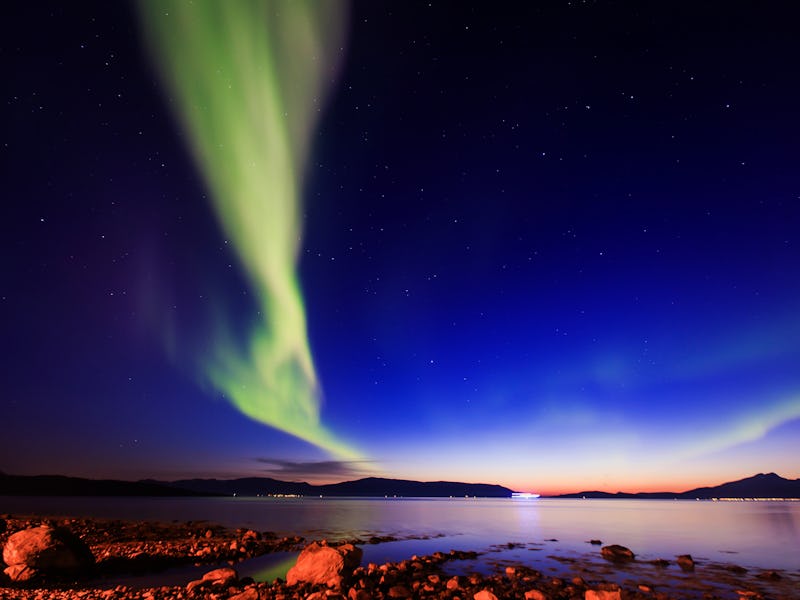Ocean study shows it takes just 5 seconds for humans to mess up an ecosystem
Peering into the world's darkest oceans reveals just how deep the damage can go.

In the world's darkest oceans, turning on a light has profound effects, shifting entire ecosystems within a matter of seconds — and not for the better.
How animals behave in the deep sea depends on their environment, and these creatures like it dark. A new study shows that light pollution from ships may disrupt ecosystems below the ocean surface as much as 200 meters deep.
The artificial light fundamentally alters how fish and zooplankton living at these depths behave.
That means research ships which emit light could throw off their own samples, calling any scientific knowledge we claim about these deep, dark oceans into question.
The study appeared Thursday in the journal Communications Biology.
The research team, led by scientists from Norway, studied animals at three different locations in Arctic. There, in the deep ocean, the phrase “dark as night” barely scratches the surface; in fact, it is thought to be one of the darkest places on Earth. But switch on a light in this pristine darkness, and everything changes.
It takes just five seconds for light to change the behavior of animals living in this unique environment. When a ship turns on its lights, the animals, disoriented, start to swim differently, and their vertical position in the water changes.
Intriguingly, the effect of light on animals appeared most dramatic at the most northerly site — it was also the darkest.
Natural vs artificial light
Not all light is bad.Animals' behaviors and migration patterns depend on cues from natural light — that which comes from the Sun, Moon, stars, and the aurora borealis. How exactly light influences behavior is still unknown. But the cyclical nature of light seems to be crucial, including how light sources change across the seasons. Because the Arctic goes dark for six months every year, it makes sense that adding artificial light may disrupt the natural rhythm of things.
The findings also suggest artificial light may be altering scientists’ surveys of marine populations in these special ecosystems. In turn, that could throw off efforts to manage and protect these areas.
Research ships like this one, which traveled to the Arctic doing investigations for NOAA, may be unwittingly disrupting marine life by working through the night.
“While changing temperature, pH, ice cover, and CO2 levels are all factors that have affected biological communities throughout their evolutionary history, artificial light is unprecedented,” they write.
The problem is unlikely to improve any time soon. Light pollution — artificial lights at nighttime — is growing by 6 percent each year, the researchers say. They describe it as “one of the fastest-spreading environmental challenges of the Anthropocene.”
Armed with more information about how light pollution affects marine animals, the researchers hope to improve both their studies and conservation efforts of these delicate environments. Scientists on future polar ocean expeditions need to take these findings into account, they say — especially if they plan to work at night.
Abstract: For organisms that remain active in one of the last undisturbed and pristine dark environments on the planet—the Arctic Polar Night—the moon, stars and aurora borealis may provide important cues to guide distribution and behaviours, including predator-prey interactions. With a changing climate and increased human activities in the Arctic, such natural light sources will in many places be masked by the much stronger illumination from artificial light. Here we show that normal working-light from a ship may disrupt fish and zooplankton behaviour down to at least 200 m depth across an area of >0.125 km2 around the ship. Both the quantitative and qualitative nature of the disturbance differed between the examined regions. We conclude that biological surveys in the dark from illuminated ships may introduce biases on biological sampling, bioacoustic surveys, and possibly stock assessments of commercial and non-commercial species.